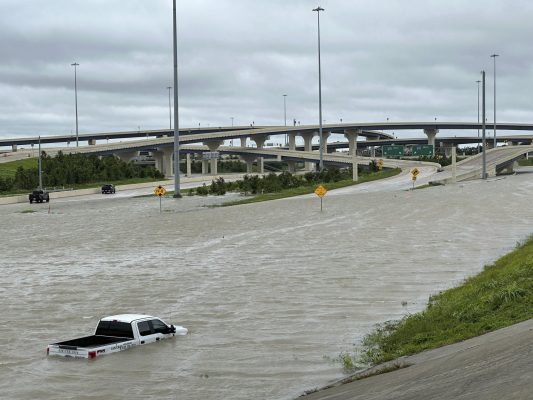Life Style
Beryl Nears Mexico’s Yucatan Peninsula
US National Hurricane Center (NHC) announced.

A vehicle is stranded in high waters on a flooded highway in Houston, on Monday, July 8, 2024, after Beryl came ashore in Texas as a hurricane and dumped heavy rains along the coast. (AP Photo/Juan A. Lozano)
Storm Beryl is expected to strengthen again into a Category 1 storm on July 7 as it moves over warm waters in a North-Northwest direction in the afternoon of the same day. The NHC has issued a hurricane warning for much of the Texas coast.
Forecasters warn that the storm could bring strong winds and heavy rain with up to 13 cm to 25 cm of rain to the Texas coast and beyond.
Coastal areas of Texas saw water levels rise on July 7, and local officials ordered the evacuation of a coastal town.
The US Coast Guard closed the port of Houston on the afternoon of July 7 because of worsening sea weather conditions, and also closed the ports of Texas City, Freeport and Galveston in Texas.
School systems – including in the largest city of Houston in Texas – said they would close on July 8.
Impact of Beryl on Houston
Strong Winds and Heavy Rain: Upon landfall, Beryl brought winds of up to 80 mph (130 km/h) and heavy rainfall, causing flooding in many areas of the city. Major roads were deeply flooded, disrupting traffic and daily life.
Widespread Power Outages: Strong winds toppled many trees and power lines, leading to widespread power outages. Thousands of households and businesses were without electricity for days, causing significant hardship for residents.
Property Damage: Numerous homes and buildings were damaged by the winds and flooding. Coastal areas and low-lying regions were the hardest hit, with many homes destroyed or severely damaged.
Response and Relief Efforts
Evacuations and Warnings: Before Beryl’s landfall, local authorities issued emergency warnings and urged residents in dangerous areas to evacuate to safety. Shelters were opened to accommodate those who had to leave their homes.
Rescue and Assistance: Rescue teams and volunteer organizations were deployed to assist affected residents. The distribution of food, water, and other necessities was quickly organized to ensure the well-being of the population.
Post-Storm Recovery: After the storm passed, authorities and the community began recovery efforts. Crews worked around the clock to restore power, clear fallen trees, and repair roads. Support from neighboring states and the federal government also helped Houston recover quickly.
Lessons from Hurricane Beryl
Hurricane Beryl reminded us of the power of nature and the necessity of being well-prepared for emergencies. Houston demonstrated resilience and effective disaster response, but it also highlighted the need to continue improving prevention and response measures for the future.
Conclusion
In July 2024, Houston faced not only high temperatures but also the challenge of Hurricane Beryl. Despite the significant damage, timely preparation and response allowed Houston to effectively manage the aftermath. It is hoped that from these experiences, the city will continue to improve and strengthen its ability to respond to natural disasters in the future.